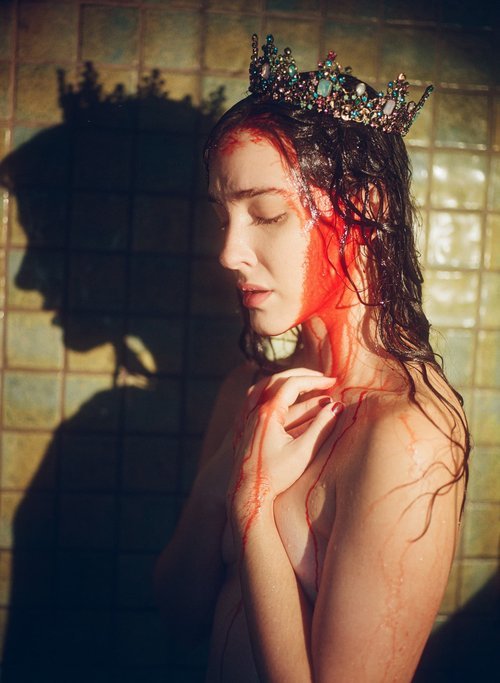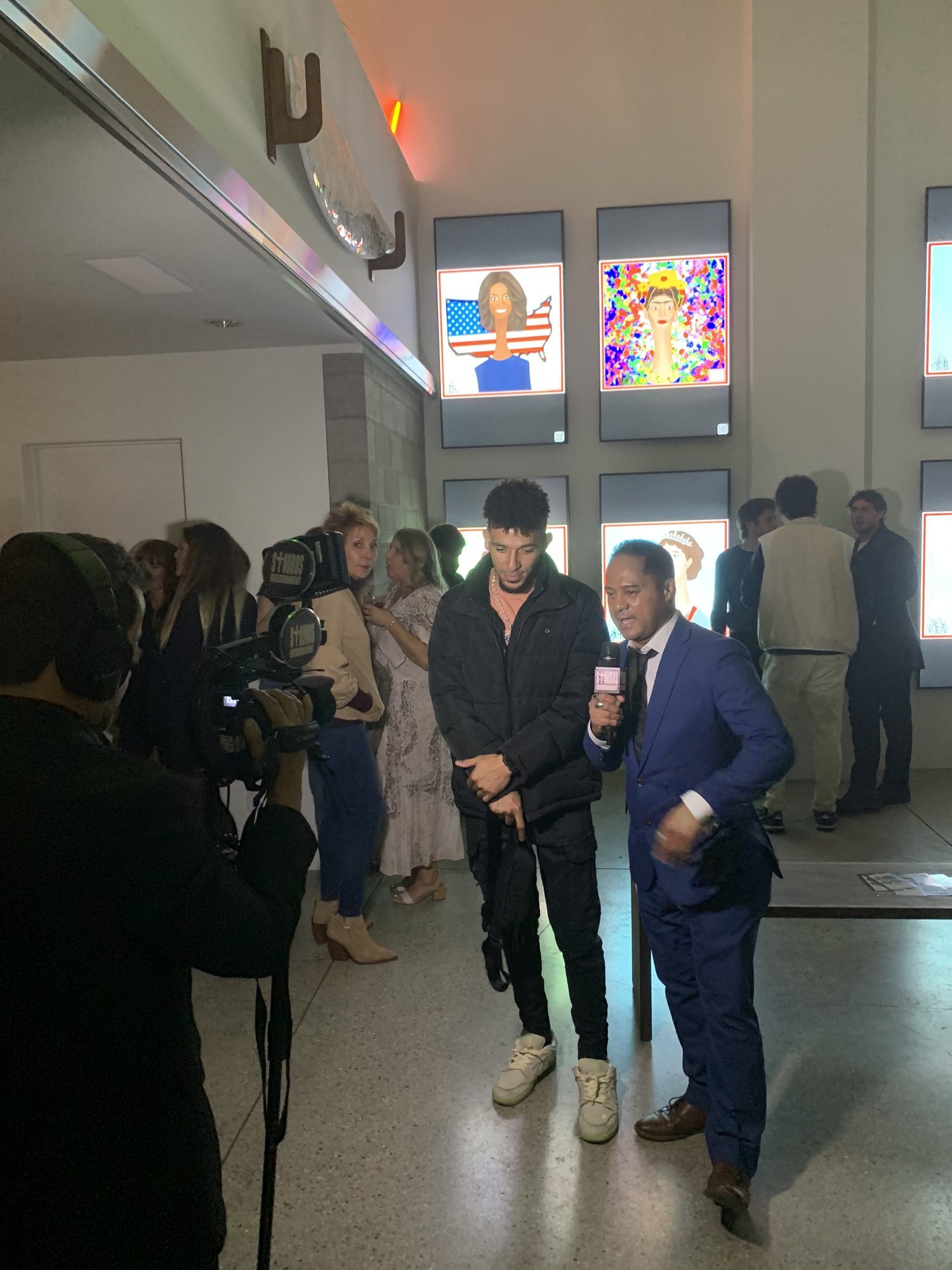Nodes From Underground
A taking of the cultural pulse of the crypto community from artists to comedians to musicians to meet ups and beyond.

A taking of the cultural pulse of the crypto community from artists to comedians to meet ups and beyond.
The digital image of a woman in a crown, blood covering much of her face, hung in the back of the Venice gallery right next to the bar. It’s a wonderful example of the photography of Julie Pacino, whose recent work tends to capture women in various degrees of distress or extremis.
Of course this can no longer just be a photograph, those days are gone. More fully, it’s a non-fungible token of a photo shot by Pacino – yes, she’s Al’s daughter – during rehearsals for a movie she’s making called I Live Here Now. The NFT sales are funding the film and allow holders, called keepers, access to the creative process.
“Become a keeper, grab your key, and democratize the way films are created,” the project’s web site proclaims.
The party in the chic Abbot Kinney neighborhood of Venice was being thrown by Kollectiff, a web3 startup that helps brands get into the metaverse. The Gall3ry, as it’s known, a three story 4,000-square foot space, will be Kollectiff’s new headquarters and says it’s the first permanent NFT gallery in Los Angeles (the nearby Bright Moments was temporary and is about to open a pop up in Berlin).
Read More: The Betrayal of Bright Moments
A jazz trio played on the second floor across from a table-long cheese plate. Matt Groening, the creator of The Simpsons, mingled for a while and sadly declined to be interviewed (we did compare shirts, however). The crowd was impossibly young and good-looking. Two other artists besides Pacino were featured at the opening, 12-year-old phenom Nyla Hayes and Jenkins the Valet of Bored Ape Yacht Club fame. All three are clients of Creative Artist Agency whose executives were in attendance. A black and white collie prowled the cheese table for dropped scraps.
Pacino got into NFTs a year ago and released her first 100 in August, she told me as we stood outside the gallery to get some air and quiet. “It’s absolutely changed my life,” she said. The difficulty of making films is no secret, yet she believes new methods of interacting with fans afforded by crypto can flip the script. Audiences are willing to take risks studios won’t and seem prepared to finance movies through NFT purchases.
“Web3 can really prove that good, thoughtful movies are viable,” Pacino said. She’s also created grants for female filmmakers whose work will be sold as NFTs with 50 percent of the secondary sales going to fund women in the industry.
“It’s my mission to hold the door open for everyone who’s coming after me,” she said. “That’s how we turn the tide.”
An NFT-caster (?) gets ready to do an interview at the Gall3ry opening in Venice, CA
The ability for artists to self-fund their work through NFT sales or other means in crypto is about as pure a distillation of the promise of web3 that I can think of. Cutting out middlemen studios or record companies has set performers like RAC, Tyler Hobbs and Pacino free while at the same time forging a new path to fan engagement.
There are deserved criticisms of NFTs and crypto more broadly – there’s too many scams, too many hacks, too many influencers who are only pumping what they own to later dump on the little guy. Yet I’ve met so many artists and musicians whose lives have been changed by selling NFTs to bankroll their creativity; it’s truly transformative and for that I would hope we’d be willing to abide some hucksterism as a tradeoff.
Read More: Tyler Hobbs and the Random Power of Generative Art
While most NFTs will be worthless over time, self financing isn’t going away.
“I’ve never made money like this from my artwork,” Pacino said. After twelve years as a professional photographer and filmmaker, “it’s all been going toward this moment,” she told me. “I’ve finally found the place where I want to make my artwork forever.”

